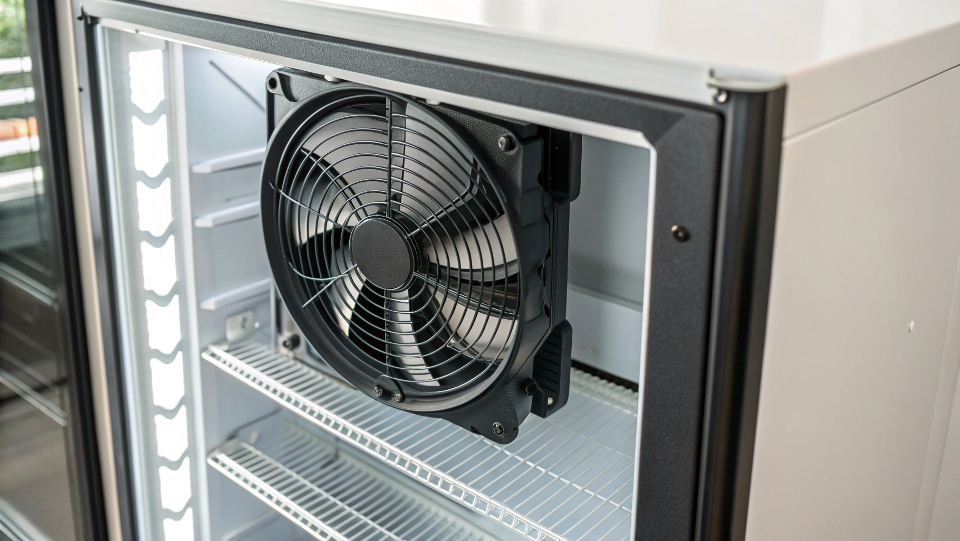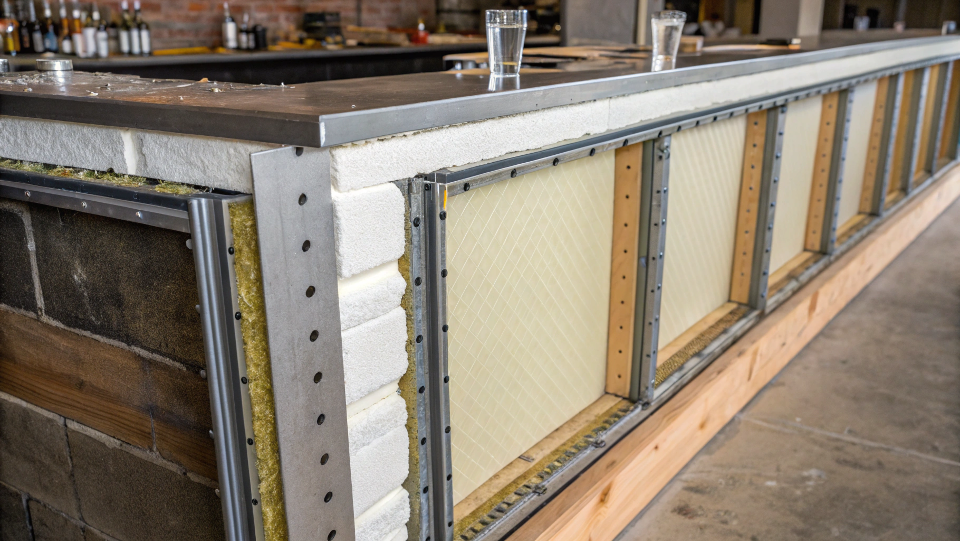A loud bar cooler can ruin the perfect ambiance you've created. It makes a premium space feel cheap and annoys customers. But new innovations now offer whisper-quiet performance.
The most significant noise reduction innovations are inverter compressors, brushless DC fans, and advanced cabinet designs. Inverter compressors avoid loud start/stop cycles, quiet fans reduce humming, and sound-dampening insulation with anti-vibration pads minimizes rattles. Together, these create a nearly silent appliance.
When I first started in this industry, the focus was all on cooling power. Noise was just something you had to accept. But as I helped business owners like you build their brands, I saw firsthand how a small detail like noise could make or break the customer experience. A beautiful retro cooler that sounds like an old engine doesn't work. You are not just selling a machine that cools drinks; you are selling a feeling, an atmosphere. Let’s look at the specific technologies you need to ask your supplier about to make sure your products deliver on that promise.
How Do Advanced Compressors Reduce Noise?
The constant starting and stopping of an old compressor is incredibly distracting. That loud clunk and hum can cheapen the feel of any room. Modern inverter compressors solve this completely.
An inverter compressor is the single biggest leap forward in quiet cooling. Unlike old models that only run at 100% power or 0%, an inverter adjusts its speed to the exact cooling need. This eliminates the loud start-up noise and settles into a consistent, barely audible hum.

When I was helping a client launch a line of high-end wine coolers, their initial samples were beautiful but noisy. The supplier used a standard, on-off compressor to save a few dollars. The noise was a deal-breaker for their target market. We switched the specification to an inverter compressor from a reputable brand like Embraco. The extra cost was minimal, but the difference was night and day. Customer complaints about noise dropped to zero. For someone like you, Alex, who focuses on premium retro-style appliances, this is non-negotiable. Your customers are buying an aesthetic, and a loud machine ruins it. An inverter compressor is the heart of a quiet appliance.
On/Off vs. Inverter Compressor
The technical difference is simple but has a huge impact. The old technology is like a light switch—it's either fully on or fully off. The new inverter technology is like a dimmer switch—it provides exactly the power needed.
| Feature | Traditional On/Off Compressor | Inverter Compressor |
|---|---|---|
| Operation | Runs at full speed, then stops | Runs continuously at variable speeds |
| Noise Level | Loud startup "clunk" and high-rpm hum | No startup jolt, very low and steady hum |
| Energy Use | High, due to constant full-power cycles | Lower, as it runs efficiently at low speeds |
| Best For | Basic, budget-focused applications | Premium, noise-sensitive environments |
When you talk to your OEM factory in China, asking for an "inverter compressor" is the first step. It shows you know what defines a modern, high-quality product.
What Role Do Fans Play in a Quiet Cooler?
The compressor might be the loudest part, but the constant whir of cooling fans can be just as annoying. This background hum can slowly drive you crazy. Better fan technology eliminates this problem.
Modern quiet coolers use brushless DC (BLDC) motors for their condenser and evaporator fans. They are naturally quieter and more energy-efficient than older AC fans. When combined with specially shaped blades, they can move air effectively without creating loud turbulence or humming sounds.
Every cooler has at least two fans: the evaporator fan inside that circulates cold air, and the condenser fan outside that removes heat. Both can be sources of noise. The switch to BLDC motors was a game-changer. These motors don't have the physical "brushes" that create friction and electrical noise in older models. They are simply smoother and quieter by design. But it doesn't stop there. The shape of the fan blades is also critical. I've seen factories in China test dozens of blade designs to find one that reduces air turbulence. It's a small detail that makes a big impact.
Key Fan Technologies for Quiet Operation
When specifying your product, you need to look beyond just the motor type. The entire fan system matters.
- Motor Type: Always specify Brushless DC (BLDC) motors. They are the standard for quiet, premium appliances.
- Variable Speed Control: Just like an inverter compressor, fans that can adjust their speed based on cooling needs are quieter. They only spin as fast as necessary, reducing the average noise level significantly.
- Blade Design: Ask your supplier about "aerodynamic" or "low-noise" fan blades. This signals that they have considered how the fan interacts with the air, not just the motor that spins it.
For your retro brand, Alex, marketing a feature like "Whisper-Quiet Airflow System" backed by BLDC fan technology adds tremendous value and justifies a premium price point.
Can the Cooler's Design Itself Make It Quieter?
Your cooler can have the best compressor and fans, but if the cabinet is flimsy, it will rattle and vibrate. This makes even a high-quality product feel poorly made. A solid, smart design is the final piece of the puzzle.
Yes, the physical construction is a critical, often overlooked, part of noise reduction. A rigid frame, sound-dampening insulation, and anti-vibration mounts for key components all work together to absorb and block noise before it ever reaches the outside.

Think of the cooler's cabinet as the body of a car. A luxury car isn't just quiet because of its engine; it's quiet because the cabin is sealed and insulated from the noise of the road and wind. The same principle applies here. This is especially important for you, Alex. Retro designs often imply durability and "old-school" solid construction. A rattling cabinet completely betrays that image. You need to ensure the build quality matches the aesthetic. I always check these three structural elements when I'm evaluating a new product for a client.
The Unsung Heroes of Noise Reduction
These are the inexpensive but highly effective design choices that separate a truly quiet cooler from an average one.
1. High-Density Foam Insulation
The polyurethane foam injected between the inner and outer walls of the cooler is not just for thermal insulation. Denser foam is also an excellent sound absorber. It deadens vibrations and muffles the internal sounds of the fans and compressor.
2. Anti-Vibration Mounts
This is one of the simplest and most effective solutions. Small rubber or silicone grommets are placed where the compressor and fan motors are mounted to the frame. These pads absorb the micro-vibrations from these components, preventing them from transferring to the metal cabinet and creating a hum.
3. Structural Rigidity
A cabinet made from thicker gauge steel with strong, well-welded joints will vibrate less than a thin, flimsy one. It's about building a solid foundation that doesn't rattle or resonate with the small movements of the internal machinery.
Conclusion
Creating a truly quiet bar cooler requires a system. It's the combination of an inverter compressor, brushless DC fans, and a solid, well-insulated cabinet design that achieves whisper-quiet performance.

